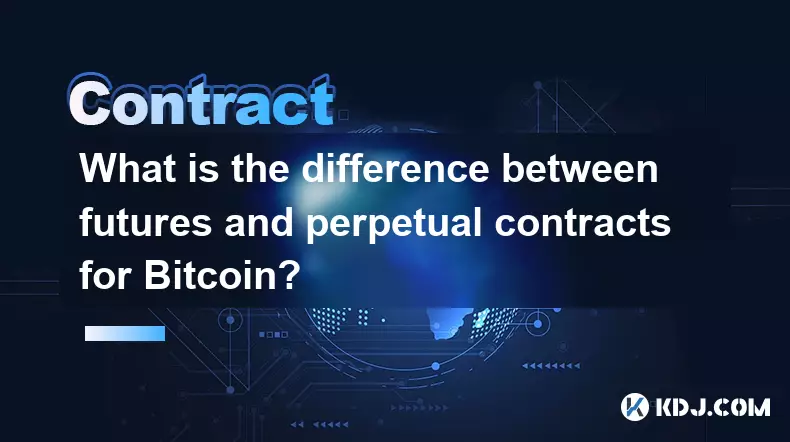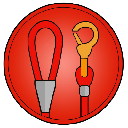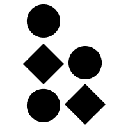-
 bitcoin
bitcoin $123963.239194 USD
1.37% -
 ethereum
ethereum $4529.082464 USD
1.07% -
 xrp
xrp $2.983640 USD
0.71% -
 tether
tether $1.000287 USD
0.02% -
 bnb
bnb $1179.874393 USD
2.99% -
 solana
solana $230.633678 USD
1.55% -
 usd-coin
usd-coin $0.999835 USD
0.03% -
 dogecoin
dogecoin $0.254240 USD
1.34% -
 tron
tron $0.341176 USD
0.15% -
 cardano
cardano $0.842285 USD
0.52% -
 hyperliquid
hyperliquid $48.537896 USD
-0.86% -
 chainlink
chainlink $21.863092 USD
-0.84% -
 ethena-usde
ethena-usde $0.999743 USD
-0.07% -
 sui
sui $3.579561 USD
-0.18% -
 stellar
stellar $0.403418 USD
2.67%
How to calculate the BitFlyer contract rate
The BitFlyer contract rate, also known as the funding rate, influences futures trading profitability and risk, calculated using a multi-faceted process involving various factors like settlement currency, spot index price, and funding rate payments/receipts.
Nov 15, 2024 at 08:42 pm

BitFlyer is a leading cryptocurrency exchange in Japan that provides various trading services, including spot and futures trading of Bitcoin (BTC) and Ethereum (ETH). The contract rate, also known as the funding rate, is a periodic fee or rebate paid by traders to keep their futures positions open. It is a crucial factor in futures trading, as it influences the profitability and risk profile of leveraged positions. This article will delve into the intricacies of calculating the BitFlyer contract rate, ensuring a comprehensive understanding of this important aspect of futures trading on the platform.
1. Identify the Contract Settlement CurrencyThe first step in calculating the BitFlyer contract rate is to identify the settlement currency of the futures contract. BitFlyer offers both BTC-settled and USD-settled futures contracts. The settlement currency determines the basis of the contract rate calculation. In the case of BTC-settled contracts, the contract rate is calculated in BTC, while for USD-settled contracts, it is calculated in USD.
2. Determine the Spot Index PriceThe spot index price is the reference price used to determine the fair value of futures contracts. It represents the real-time price of the underlying asset in the spot market. BitFlyer utilizes the TWAP (Time-Weighted Average Price) method to calculate the spot index price. The TWAP is the average price of the underlying asset over a specified period, typically one hour.
3. Calculate the Fair Value of the Futures ContractThe fair value of a futures contract is the theoretical price at which it should trade in the absence of arbitrage opportunities. It is calculated using the spot index price and the time value of money. The time value of money is the value of having the right to buy or sell an asset at a future date. It is calculated based on the prevailing interest rates and the time to expiration of the contract.
4. Determine the Contract Premium or DiscountThe contract premium or discount refers to the difference between the current futures price and the fair value of the contract. A positive premium indicates that the futures price is trading above its fair value, while a negative discount indicates that the futures price is trading below its fair value. The contract premium or discount is a reflection of market sentiment and expectations regarding the future price of the underlying asset.
5. Calculate the Funding RateThe funding rate is calculated based on the contract premium or discount, the annualized interest rate, and the time to expiration of the contract. It is a dynamic rate that can change every eight hours on BitFlyer. The funding rate ensures that the futures price converges to the fair value of the contract by incentivizing traders to take positions that bring the price closer to its fair value.
6. Understand Funding Rate Payments and ReceiptsTraders who hold long positions typically pay the funding rate, while traders who hold short positions typically receive the funding rate. The funding rate is paid or received every eight hours, resulting in a potential impact on the profitability of leveraged positions. It is important for traders to consider the funding rate when evaluating the potential returns and risks of their futures positions.
7. Monitor the Announcement of the Funding RateBitFlyer announces the upcoming funding rate approximately one hour before the payment or receipt schedule. Traders should monitor these announcements to plan their trading strategies accordingly. Timely awareness of the funding rate can help traders optimize their positions to mitigate potential negative impacts and maximize potential profits.
ConclusionCalculating the BitFlyer contract rate is a multi-faceted process that involves understanding the settlement currency, spot index price, fair value of the futures contract, contract premium or discount, and funding rate. By following the steps outlined in this article, traders can accurately determine the contract rate and make informed trading decisions. A thorough understanding of the contract rate is essential for successful futures trading on BitFlyer, enabling traders to navigate the complexities of this highly leveraged market.
Disclaimer:info@kdj.com
The information provided is not trading advice. kdj.com does not assume any responsibility for any investments made based on the information provided in this article. Cryptocurrencies are highly volatile and it is highly recommended that you invest with caution after thorough research!
If you believe that the content used on this website infringes your copyright, please contact us immediately (info@kdj.com) and we will delete it promptly.
- BlockDAG, DOGE, HYPE Sponsorship: Crypto Trends Shaping 2025
- 2025-10-01 00:25:13
- Deutsche Börse and Circle: A StableCoin Adoption Powerhouse in Europe
- 2025-10-01 00:25:13
- BlockDAG's Presale Buzz: Is It the Crypto to Watch in October 2025?
- 2025-10-01 00:30:13
- Bitcoin, Crypto, and IQ: When Genius Meets Digital Gold?
- 2025-10-01 00:30:13
- Stablecoins, American Innovation, and Wallet Tokens: The Next Frontier
- 2025-10-01 00:35:12
- NBU, Coins, and Crypto in Ukraine: A New Yorker's Take
- 2025-10-01 00:45:14
Related knowledge

What is the difference between futures and perpetual contracts for Bitcoin?
Oct 02,2025 at 11:54pm
Understanding Bitcoin Futures Contracts1. Bitcoin futures are derivative instruments that allow traders to speculate on the future price of Bitcoin at...

What is the best time to trade PEPE contracts?
Oct 03,2025 at 11:54am
Understanding PEPE Contract Volatility1. PEPE contracts exhibit extreme price fluctuations due to their meme-based nature and low market cap. Trading ...

What are the common mistakes to avoid with Bitcoincoin contracts?
Oct 03,2025 at 08:54am
Emerging Trends in the Cryptocurrency Market1. Decentralized finance (DeFi) platforms continue to expand their influence across the blockchain ecosyst...

What is the maintenance margin for Bitcoin contracts?
Oct 02,2025 at 01:36am
Decentralized Exchanges Gain Momentum in 20241. Decentralized exchanges (DEXs) have seen a significant rise in trading volume, surpassing centralized ...

How to use technical analysis for trading XRP contracts?
Oct 03,2025 at 01:18pm
Understanding Price Patterns in XRP Futures1. Identifying chart patterns such as triangles, head and shoulders, and double tops or bottoms can provide...

What does "longing" PEPE contracts mean?
Oct 03,2025 at 11:54pm
Understanding Decentralized Exchanges in the Crypto Ecosystem1. Decentralized exchanges (DEXs) operate without a central authority, allowing users to ...

What is the difference between futures and perpetual contracts for Bitcoin?
Oct 02,2025 at 11:54pm
Understanding Bitcoin Futures Contracts1. Bitcoin futures are derivative instruments that allow traders to speculate on the future price of Bitcoin at...

What is the best time to trade PEPE contracts?
Oct 03,2025 at 11:54am
Understanding PEPE Contract Volatility1. PEPE contracts exhibit extreme price fluctuations due to their meme-based nature and low market cap. Trading ...

What are the common mistakes to avoid with Bitcoincoin contracts?
Oct 03,2025 at 08:54am
Emerging Trends in the Cryptocurrency Market1. Decentralized finance (DeFi) platforms continue to expand their influence across the blockchain ecosyst...

What is the maintenance margin for Bitcoin contracts?
Oct 02,2025 at 01:36am
Decentralized Exchanges Gain Momentum in 20241. Decentralized exchanges (DEXs) have seen a significant rise in trading volume, surpassing centralized ...

How to use technical analysis for trading XRP contracts?
Oct 03,2025 at 01:18pm
Understanding Price Patterns in XRP Futures1. Identifying chart patterns such as triangles, head and shoulders, and double tops or bottoms can provide...

What does "longing" PEPE contracts mean?
Oct 03,2025 at 11:54pm
Understanding Decentralized Exchanges in the Crypto Ecosystem1. Decentralized exchanges (DEXs) operate without a central authority, allowing users to ...
See all articles










































































